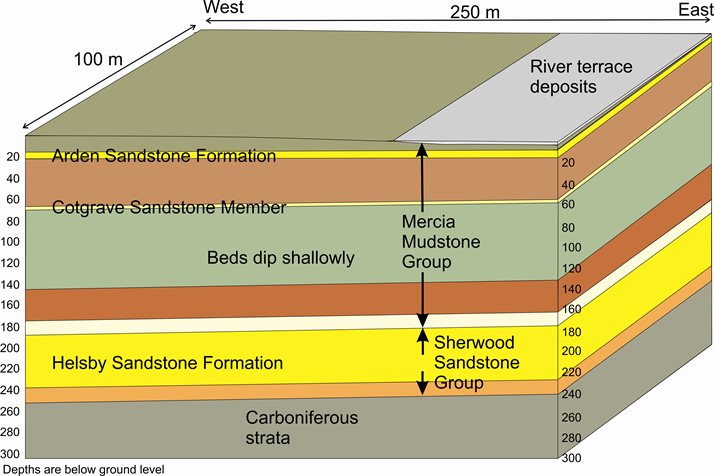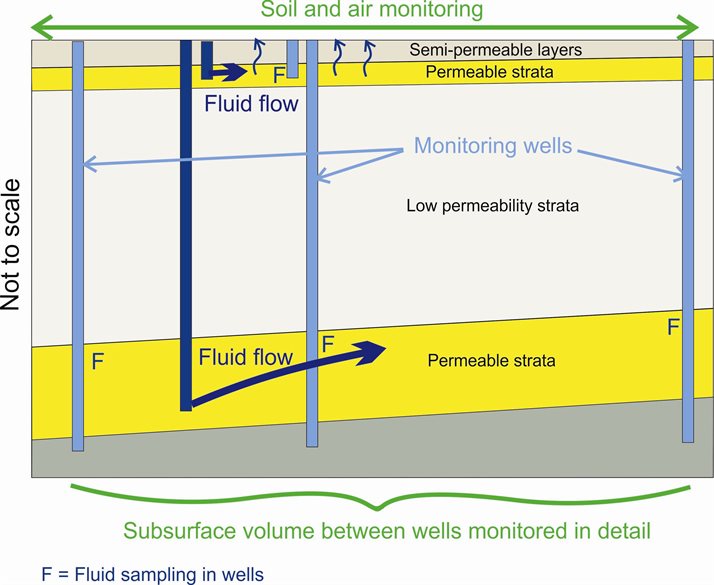What is the Concept and Geology of the GTB?

The geology of the GTB provides the ideal strata to investigate rock-fluid interactions related to different aspects of geoenergy. The many different layers of rock that lie beneath the soil at the GTB are part of the Mercia Mudstone Group and the Sherwood Sandstone Group, which are present across the Midlands, north-east England and under the North Sea.
The Mercia Mudstone Group (MMG) sits just below the soil. This is a low permeability rock that is expected to act as a caprock to the underlying Sherwood Sandstone Group (SSG) reservoir. The MMG one of the geological formations that naturally traps oil and gas in the rock strata under the North Sea.
At the GTB the MMG includes the following strata:
Branscombe Mudstone Formation
Arden Sandstone Formation
Sidmouth Mudstone Formation which includes the following:
Tarporley Siltstone Formation
The Sherwood Sandstone Group (SSG) at the GTB includes the following strata:
Beneath the SSG are strata from the Carboniferous Period.
*The Helsby Sandstone is the primary aquifer at the GTB and will be the focus of groundwater research.
Rock samples were extracted from the site as the wells were drilled, and these samples will enable laboratory studies on the GTB sandstones and mudstones. The rock samples show that, at the GTB, the Mercia Mudstone Group mainly comprises mudstones and siltstones, with some thin sandstone layers in the Arden Sandstone Formation. The Mercia Mudstone Group strata contains small fractures caused by natural movement of the subsurface over geological timescales. These fractures have been infilled by minerals. At the GTB, the Sherwood Sandstone Group largely comprises sandstone with pebbly layers. A thin basal layer of mixed sandstones, mudstones and conglomerates is also present. The Carboniferous strata comprises mudstones and sandstones at the GTB.
The Cross-Section Concept of the GTB
The diagram below shows a basic cross section through the conceptual design of the GTB. The site has several boreholes, of varying depths, that pass through both permeable and low permeability rock strata. The boreholes house a range of new sensor technologies to monitor the movement of near-surface and subsurface fluids. The extensive collection of surface and down-hole sensors are operated by an on-site control centre. The data is transmitted to both the University of Nottingham and British Geological Survey for remote tracking. Repeat campaigns to collect fluid and soil samples will also be undertaken.
The site will generate large amounts of data describing properties and movements of fluid, which will be used to iteratively improve the site geological models produced by new advanced simulation techniques that are currently under development.

Glossary of Terms
Conglomerate: A mixture of sand grains and pebbles that have been compressed into rock over geological timescales
Mudstone: Very fine mud grains that have been compressed into rock over geological timescales. Mudstones generally have low permeability
Sandstone: Sand grains that have been compressed into rock over geological timescales. Sandstones often have good porosity and permeability
Siltstone: small silty grains (slightly larger than mud) that have been compressed into rock over geological timescales
Strata: Layers of different rock types